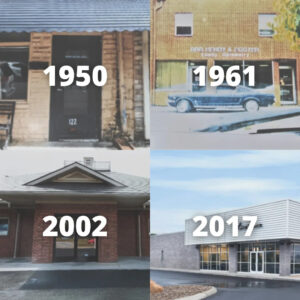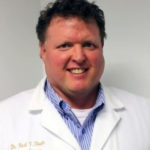
Dr. Steele’s practice, which he purchased in 1996, has grown and evolved substantially. The changes have allowed Dr. Steele to provide more advanced care for many more patients.
By Kurt T. Steele, OD
July 19, 2023
Greetings from St. Louis! I am here touring a new optical lab I started using (very happy so far), and my wife just flew here. We are going to see Bryan Adams and Joan Jett tonight (I just aged myself–I was born in the Summer of 69’). I do not hate myself for loving optometry, and hopefully, these articles will help you find Heaven in your practices. Anyone under 50 may not get that one.
A modest practice must pace itself in growth but also has to set goals that take it where the owner wants it to go. In our rural practice, which was at $380,000 annually when I purchased it 27 years ago, and now generates $3 million+ per year, we grew incrementally. Here is how we did it.
Set Growth Goals & Determine What’s Needed to Meet Those Goals
We really wanted to grow the medical side of our practice. We wanted to be able to see 3-4 patients per hour and do it efficiently.
In our case, meeting growth goals was helped greatly by building a new office, which we did twice. The opening of those two new office spaces was the best two years of growth we ever had. At one point in our second office, we ran out of parking and had to park across the street to allow patients to park in our lot. That was when we decided to build again. Never, ever sacrifice growth for lack of space. If you need the space to grow, go get it. Be sure you have enough parking if you build or expand. I have determined that you need 15 spaces per doctor.
An interesting statistic…in both cases when we knew it was time to expand by building a new, larger building we peaked at bringing in $450 per square foot in the previous building. Depending on the location, it seems if you are collecting $450-$550 per square foot, and you have reached a plateau, lack of space could be your problem.
In addition to larger, improved office space, our growth was spurred significantly by visiting local medical facilities and treating the doctors to breakfast or lunch. Medical practices love information (and free food) and hate the eyeball. They are more than welcome to a free meal and education, perhaps on ocular emergencies. Call and ask for the office manager. They usually schedule these things.
As we all know, holding on to established patients is key, so putting together and maintaining an amazing team is also key. Survey your team to see what is important to them. We did that years ago and responded to their feedback. Our turnover has been low and morale high ever since.
Automate As Much As Possible & Train Well
We automated as much as possible and have wonderfully trained techs. Two to three times yearly we close to evaluate efficiencies and train. People sometimes ask me how I can afford to do this. I don’t see how anyone can afford not to. A few days annually of improving processes and systems in order make you more money easily makes up for the revenue lost from having the office closed those days.
Definitely try to have all paperwork done before the patient arrives. Patients filling out paperwork before their appointment is a time killer. Also, I always go through the schedule the night before and write down all tests I want done, so all data I need is done before they come back to the exam room. On the same sheet, I also indicate whether we are billing medical or vision.
Know When Your Numbers Are Telling You to Staff Up
Follow the numbers. If you are booked out for more than a month on a consistent basis, you can add another doctor. One of the things that make me cringe the most is when a colleague brags about how they are booked out months in advance. First, you are making your patients wait months to see their best. Secondly, you are sitting on a gold mine. Hire more doctor(s), actively give them patients, and watch your practice grow immediately. If patients are having to wait more than a month to see a doctor, you need another doctor.
Other Articles to Explore
Be sure to leave open a slot a day for “comprehensive emergencies.” A high Rx patient with broken glasses is an “optical emergency.” These patients need immediate attention, and will also probably lead to a very nice optical purchase!
We try to keep our support staff costs at 22-24 percent, or another way to look at it is to have one team member for every $175,000-$200,000 of revenue.
Never Stop Setting Growth Goals
We have a second location that has grown from $500,000 to $1.2 million and has maximized its space. So, we just got approved by the local planning commission to build a new location.
I love philosophical quotes and will try to share one in each article. Here’s one to leave you with for now: “Remember you cannot please everyone. You are not a taco.”
 Kurt T. Steele, OD, is a Partner of Vision Source of Newport in Newport, Tenn. To contact him: idoc2316@gmail.com
Kurt T. Steele, OD, is a Partner of Vision Source of Newport in Newport, Tenn. To contact him: idoc2316@gmail.com

























